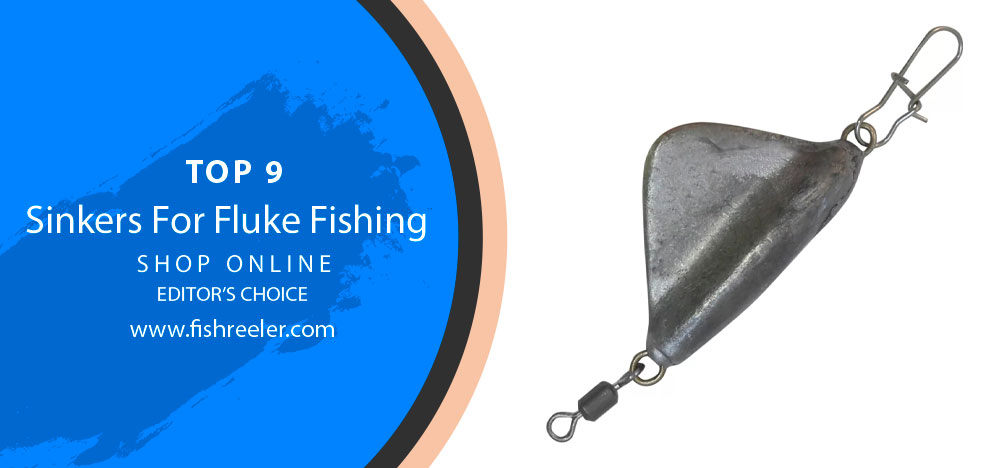
How Sinkers Can Make or Break Your Fluke Fishing Experience
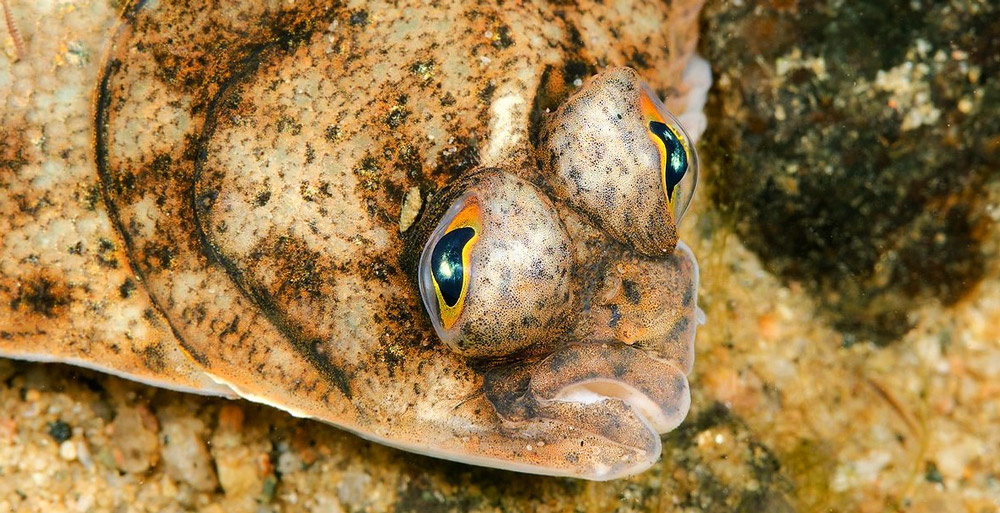
Brief Overview of Fluke Fishing
Fluke, also known as summer flounder, is among the most sought-after saltwater fish due to their delicious taste and the unique challenge they present to anglers. Found predominantly along the Atlantic coast of the U.S., the fluke is a bottom-dwelling fish known for its camouflage skills and ambush-hunting style. Fluke fishing is particularly popular during the summer months when these fish move to inshore waters, making them accessible to both boat and shore anglers.
Equipping for Success: The Crucial Role of Sinkers in Fluke Fishing
Like any form of fishing, success in fluke fishing hinges on numerous factors such as location, timing, and of course, the right equipment. Along with a reliable fishing rod, sharp hooks, and enticing bait or lures, one piece of gear that is often overlooked but plays a crucial role in fluke fishing is the sinker. Sinkers are weights used in fishing to force the bait to sink more rapidly or to increase the distance that line can be cast. The right sinker can make your bait or lure appear more attractive to a fluke, increasing your chances of a successful catch.
In fluke fishing, the sinker not only gets your bait to the seabed where fluke dwell but also helps maintain the right position in various water conditions. Given the fluke’s habit of lying flat on the seabed and partially burying themselves in sand or sediment, it’s essential that your bait is presented right at their level. Using the right sinker can help achieve this optimal bait presentation.
Sinker Selection: A Game Changer in Your Fluke Fishing Adventures
Therefore, understanding and choosing the right sinker can significantly increase your chances of catching a fluke. The rest of this article will delve into the world of sinkers, exploring different types, their uses in fluke fishing, and tips to choose and use them effectively to elevate your fluke fishing experience.
Sinkers and Fluke Fishing: Essential Tools for the Savvy Angler
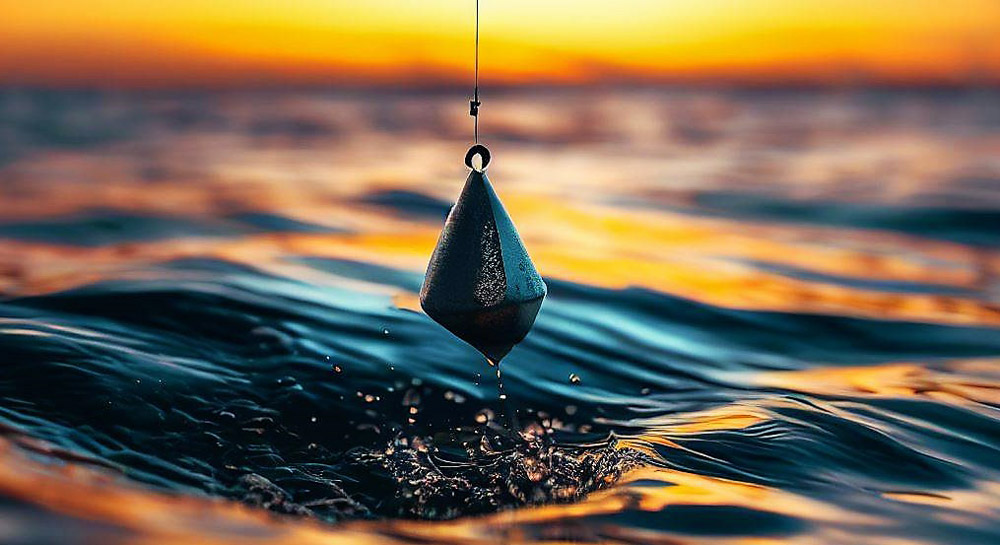
What sinkers do you use for fluke fishing? If you’re not sure, or if you’re looking for some new ideas, check out our list of the best sinkers for fluke fishing. We’ve compiled a list of the top-rated sinkers on the market, so you can find the perfect one for your needs.
In this blog post, we will recommend some of the best sinkers for fluke fishing. These top-rated sinkers are sure to help you land more fish! So, if you’re looking to increase your success rate while fishing for fluke, be sure to check out our recommendations below.
1# Bass Pro Shops CatMaxx Bank Sinker
Whether you’re fishing in calm waters or strong currents, you can rely on our Bass Pro Shops CatMaxx Bank Sinkers to keep your bait securely in the strike zone. These premium lead sinkers are precision-moulded into a teardrop shape that helps reduce hang-ups on rocks and feature flat sides that discourage movement in strong currents. They’re an essential tool for a variety of fishing situations, so be sure to keep extras in your tackle bag!
2# Bullet Weights Ultra Steel Bass Casting Sinker
Looking for a high-performance, environmentally friendly alternative to lead sinkers? Look no further than the Bullet Weights Ultra Steel Bass Casting Sinkers! These durable weights are made of steel and retain their shape incredibly well while being less bulky than other non-lead weights. They’re also easy to cast and won’t snag easily, making them ideal for both novice and experienced anglers alike. So do your part to protect the environment and support sustainable fishing practices – give the Bullet Weights Ultra Steel Bass Casting Sinkers a try on your next fishing trip!
3# Northland Fishing Tackle Keel Trolling Weight
The Northland Fishing Tackle Keel Trolling Weight is just what you need. With quality components that securely engage your line and a sleek profile that minimizes water drag, this weight is perfect for getting your bait right where the fish are biting. Order yours today and see the results for yourself!
4# Bullet Weights Paddlefish Snagging Weight
Do you love fishing for Sturgeon but dread the thought of all the gear strain and line tangles? Well, say goodbye to those frustrating days out on the water with the Bullet Weights Paddlefish Snagging Weight. This top-of-the-line snagging weight is designed with a unique reverse tear-drop shape that allows for more control and less wedging in structure. So you can cast farther with fewer line twists and get your hook down to just the right depth every time. Plus, the Paddlefish Snagging Weight reduces hang-ups in brush and rocks, providing you with superior leverage for hooksets and fish fighting. So you can spend more time enjoying your fishing trip, and less time struggling with your gear.
5# VMC Tungsten Slider Weight
Weighing in at a whopping 99 per cent pure tungsten, the VMC Tungsten Slider Weights are perfect for nimbly working your way through thick cover without worrying about hang-ups. These weights also feature a compact design that slips easily through weeds and other types of cover. And because they’re made of tungsten, a naturally occurring element that is environmentally friendly and heavy, these weights are also incredibly durable. So whether you’re fishing for bass in the thickest brush or targeting crappie in dense weeds, the VMC Tungsten Slider Weight will help you get to the fish without any problems.
6# H&H Lure Sinker
If you’re looking for a reliable and eco-friendly sinker option for your next fishing trip, look no further than H&H Lure Sinkers. Our sinkers are constructed from durable lead and are perfect for use in saltwater. Plus, our 8-pack (1 oz), 4-pack (2 oz), 3-pack (3 oz), and 2-pack (4 oz) options give you the flexibility to choose the right weight for your needs. And because we’re committed to sustainability, all of our sinkers are made from eco-friendly materials. So what are you waiting for? Order your H&H Lure Sinkers today!
7# H&H Lure Egg Sinker
Make sure you’ve got the H&H Lure Egg Sinkers on your line! These sinkers are made of tough lead, so they can withstand even the most hardcore fishing trip. Plus, their egg shape makes them perfect for getting down to those hard-to-reach spots. So whether you’re an experienced angler or just starting out, these sinkers will give you the upper hand in your next fishing expedition. So don’t wait – grab a set of H&H Lure Egg Sinkers today and see what you can reel in!
8# Eagle Claw Swiveling Trolling Sinker
The Eagle Claw Swiveling Trolling Sinkers are perfect for use with trolling. The swivel design prevents line twists, and the lead material ensures long-lasting durability. The sinkers come in a variety of sizes to match your fishing needs, and they’re easy to use. Simply attach them to your line and let them do the work. Whether you’re a beginner or a seasoned pro, the Eagle Claw Swiveling Trolling Sinkers are a great choice for a successful day of fishing.
9# Lazer Sharp Ready Rigs with Egg Sinker
Check out the Lazer Sharp 1/2 oz. – 18″ Ready Rigs with Egg Sinkers 2-Pack. These rigs are made of bright steel wire with lead egg sinkers and red beads, and they’re easy to use with durable snaps. Plus, the crane swivels make them even more convenient. With a length of 18″, these rigs are sure to help you catch plenty of fish.
Understanding Fluke Fishing
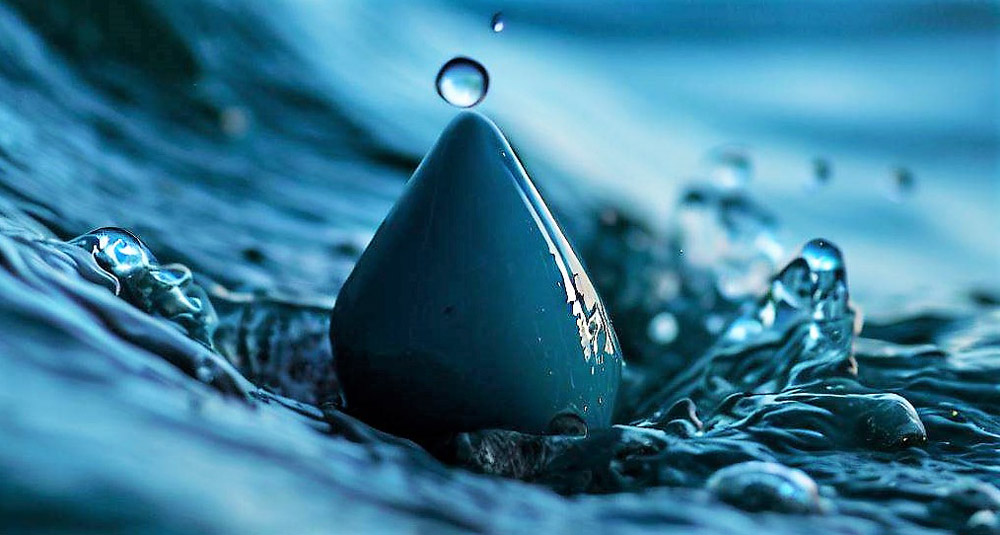
Fluke Unveiled: Getting to Know Your Target
Fluke, scientifically known as Paralichthys dentatus, is a species of flatfish native to the Atlantic coast of the United States and Canada. They are characterized by their unique ability to camouflage with the ocean floor, changing colors and patterns to blend in with the sandy or muddy seabed. This camouflage not only protects them from predators but also allows them to ambush prey effectively.
Fluke are bottom dwellers, preferring sandy or muddy substrates where they can bury themselves to lie in wait for prey. They feed on a variety of small fish, squid, and crustaceans, making baits such as squid, minnows, or even artificial lures effective for fluke fishing.
Fluke are migratory and their location changes with the seasons. During the warmer months, they move inshore into shallower waters – this is when most recreational fluke fishing occurs. As the water cools, flukes migrate offshore to deeper waters, making them less accessible to anglers.
Navigating the Highs and Lows of Fluke Fishing
Fluke fishing presents several challenges, which in turn make it an exciting and rewarding pursuit for many anglers. Firstly, a fluke’s excellent camouflage and bottom-dwelling habits require anglers to perfect their bait presentation, ensuring it reaches the seabed and is enticing enough to lure a fluke out of its hiding. Secondly, fluke is known for its subtle bites – often just a light tap – which requires keen senses and quick reactions from the angler to set the hook.
Despite these challenges, the rewards of fluke fishing are plentiful. Fluke are renowned for their fight, often making strong, fast runs that test the skill and equipment of any angler. Additionally, they are considered one of the tastiest saltwater fish, making them a favorite target for those who enjoy the culinary rewards of their efforts.
Gear Up Right: The Importance of Equipment in Fluke Fishing
Proper gear plays a critical role in overcoming the challenges of fluke fishing and reaping its rewards. This includes a sensitive yet strong rod to detect the fluke’s light bite and handle their fight, a reel with a smooth drag system to manage the fluke’s runs, and a strong, abrasion-resistant line given the fluke’s environment filled with potential snags.
An equally important yet often overlooked piece of gear is the sinker. Since fluke is bottom dwellers, the sinker is crucial in delivering the bait to the seabed and keeping it in the strike zone. Furthermore, different sinkers can change how the bait is presented and moved, potentially making it more enticing to a wary fluke. As such, understanding and choosing the right sinker can significantly enhance your fluke fishing success.
The Role of Sinkers in Fishing
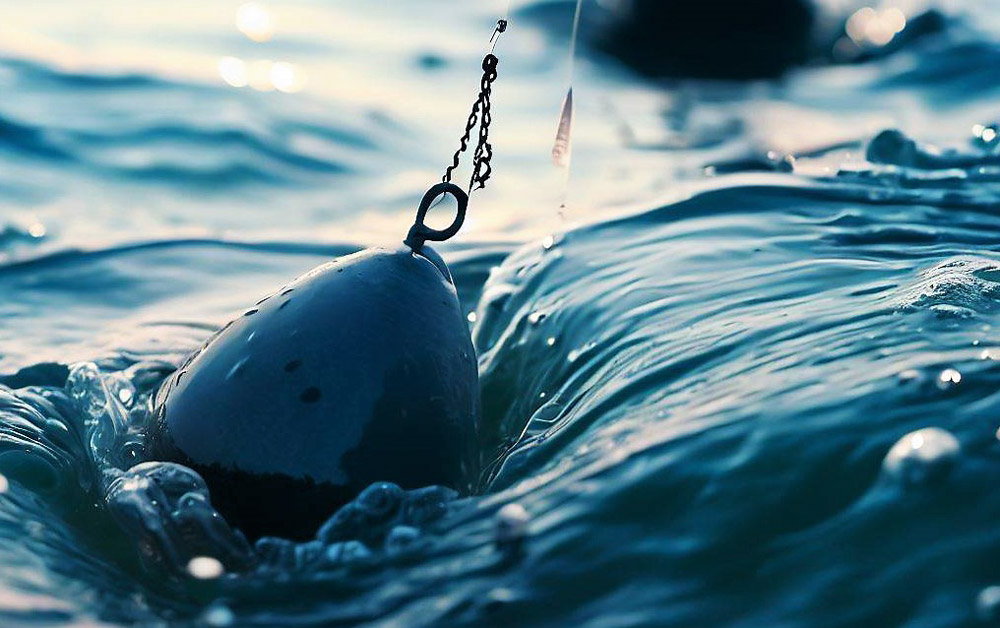
Sinkers Decoded: An Indispensable Component of Fishing
Sinkers, often referred to as weights, are an integral part of the fishing tackle that serve a few key purposes. Primarily made of lead, steel, brass, or tungsten, sinkers are used to add weight to the fishing line, allowing the angler to cast further and helping the bait or lure to sink deeper into the water. In essence, they provide control over the depth and distance of your cast, enabling you to reach the areas where fish are likely to be found.
Casting Influence: How Sinkers Affect Line and Lure
The weight and shape of the sinker can significantly influence the behavior of your fishing line and the presentation of your bait or lure. A heavier sinker will allow your line to sink faster and reach greater depths, making it ideal for fishing in deeper waters or strong currents. However, it may also make your line more noticeable to wary fish and harder for them to move, potentially reducing the naturalness of your bait or lure’s movement.
The shape of the sinker also plays a role. For instance, a pyramid-shaped sinker is designed to dig into sandy or muddy bottoms, keeping your line in place in stronger currents. On the other hand, a round or bead-shaped sinker may roll or slide along the bottom, providing a different kind of bait movement that might be more enticing to certain fish.
Tipping the Scales: How Sinkers Swing the Success of Fluke Fishing
In the context of fluke fishing, the role of the sinker is even more critical. Since fluke is bottom-dwelling fish that lie flat on the seabed, your bait or lure needs to be presented right at their level to catch their attention. Here, the sinker serves the crucial function of ensuring your bait gets to and stays on the bottom.
However, it’s not just about getting the bait to the seabed. The way your bait moves along the bottom can trigger a fluke’s predatory instincts. For example, a sinker that allows your bait to bounce or glide along the seabed can mimic the movement of a fleeing prey, making it irresistible to a fluke.
Therefore, understanding the role of sinkers and choosing the right one based on the fishing conditions and the behavior of fluke can significantly increase your success in fluke fishing.
Types of Sinkers for Fluke Fishing
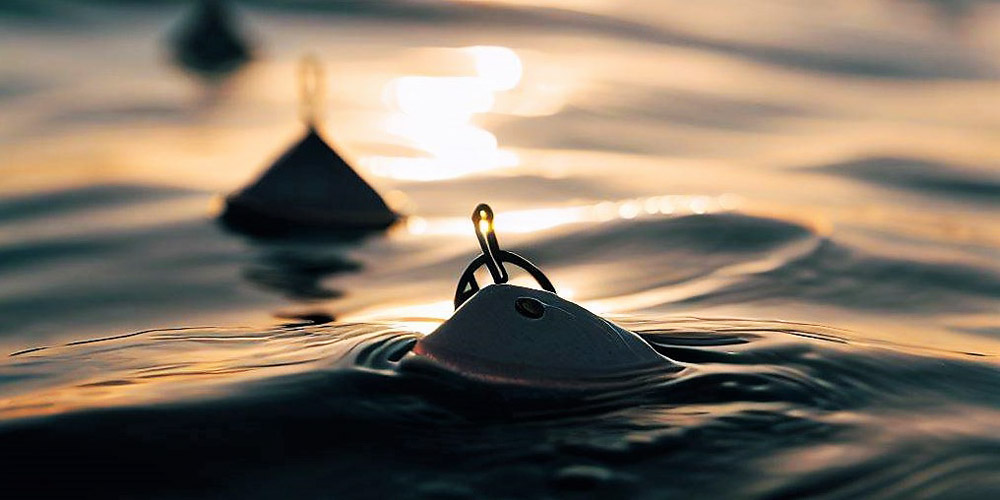
Exploring Your Options: A Tour of Sinkers for Fluke Fishing
Several types of sinkers are commonly used in fluke fishing, each with its unique characteristics:
| Sinker Type | Description | Unique Properties |
|---|---|---|
| Bank Sinkers | Shaped like a rounded teardrop with a hole at the narrow end for attaching the fishing line. | Their shape makes them resistant to snags, allowing them to slide over rocks and other bottom structures easily. |
| Pyramid Sinkers | Shaped like a pyramid, with a line attached at the top. | The pyramid shape is designed to dig into sandy or muddy bottoms, making them ideal for fishing in areas with strong currents. |
| Coin Sinkers | Also known as disc or pancake sinkers, they are flat and round, resembling a coin. | They are designed to slide over the bottom, making them suitable for fishing in areas with sandy or muddy substrates. |
Weighing Pros and Cons: Choosing the Ideal Sinker for Fluke Fishing
| Sinker Type | Advantages | Disadvantages |
|---|---|---|
| Bank Sinkers | Their ability to resist snags makes them suitable for fishing in areas with rocky or rough bottoms. | They may not hold well in strong currents due to their rounded shape. |
| Pyramid Sinkers | They hold well in strong currents, making them ideal for fishing in deeper waters or areas with fast-moving water. | Their ability to dig into the bottom can be a disadvantage in certain situations, as they can get stuck in very soft or muddy bottoms. |
| Coin Sinkers | Excellent for bottom fishing in areas with soft substrates, as they can slide over the bottom without getting stuck. | They may not be as effective in strong currents or rough bottoms due to their flat shape. |
Adapting to the Waters: Selecting Sinkers for Various Fishing Conditions
Choosing the right sinker for fluke fishing depends on several factors, including water depth, current strength, and bottom composition:
| Factor | Explanation | Sinker Recommendation |
|---|---|---|
| Water Depth | In deeper waters, a heavier sinker may be needed to reach the bottom and keep your bait in the strike zone. | Bank or pyramid sinkers are often a good choice in these conditions due to their weight and shape. |
| Current Strength | In areas with strong currents, a sinker that can hold the bottom effectively is essential. | Pyramid sinkers are typically recommended in such situations due to their ability to dig into the bottom. |
| Bottom Composition | For sandy or muddy bottoms, a sinker that can slide over the bottom without getting stuck is often the best choice. However, for rocky or rough bottoms, a snag-resistant sinker may be more suitable. | For sandy or muddy bottoms, a coin sinker is often the best choice. For rocky or rough bottoms, a bank sinker may be more suitable. |
📌In all cases, it’s important to experiment with different sinkers and adjust your choice based on the fishing conditions and the behavior of the fluke on a given day.
Techniques for Using Sinkers in Fluke Fishing

How to Properly Attach Sinkers to Your Fishing Line
Attaching a sinker to your fishing line depends on the type of sinker and the rig you’re using. For most sinkers, like bank or pyramid ones, you can simply thread your line through the hole at the top and secure it with a knot or a swivel. For slip sinkers, which are designed to move freely along the line, you’ll need to thread your line through the sinker before tying on a swivel, and then attach your leader and hook to the other end of the swivel.
In fluke fishing, a popular rig is the fluke rig or flounder rig, also known as the fish finder rig. This rig uses a sliding sinker on the main line, with a swivel connecting a leader and a hook. The sliding sinker allows a fluke to pick up the bait and swim away without immediately feeling the weight of the sinker, increasing your chances of a successful hook set.
Adjust to Win: Modifying Sinker Weight for Optimal Performance
The weight of your sinker can greatly affect your fishing success. In general, you want to use the lightest sinker that can keep your bait at the right depth in the current conditions. Too heavy a sinker can make your bait appear unnatural, while too light a sinker may not keep your bait in the strike zone.
In calm, shallow waters, a lighter sinker may be all you need. However, in deeper waters or stronger currents, a heavier sinker may be necessary. It’s a good idea to start with a medium-weight sinker and then adjust based on your observations. If your line is being swept away by the current or not reaching the bottom, you may need to switch to a heavier sinker. On the other hand, if your bait is not moving naturally or you’re getting snagged often, you may need to switch to a lighter sinker.
Bait Presentation Perfected: Using Sinkers for Effective Lure Display
Proper use of sinkers can greatly enhance your bait or lure presentation, making it more enticing to fluke. Here are a few strategies:
- Bounce the Sinker: One effective strategy is to bounce the sinker along the bottom, creating a puff of sand or sediment that can attract fluke’s attention. This mimics the behavior of digging or fleeing prey, triggering the fluke’s predatory instincts.
- Drift the Bait: Another strategy is to use a light enough sinker that allows your bait to drift along with the current, appearing natural and enticing to fluke. This is particularly effective in areas with a slow-moving current.
- Static Bait: In areas with a strong current, a heavier sinker can be used to hold your bait in place, allowing fluke to find it. This is particularly effective when fishing over a known fluke hotspot.
📌Remember, the key to successful fluke fishing is to experiment with different sinkers and techniques and adjust your strategy based on the conditions and the fluke’s behavior.
Real-Life Experiences and Case Studies

Lessons from the Deep: Personal Experiences with Sinkers in Fluke Fishing
Throughout my years of fluke fishing, sinkers have played a significant role in my successes and learning experiences. One particular incident comes to mind when I was fishing in an area known for its strong currents. I began the day using a lighter bank sinker, as is my usual preference. However, despite multiple attempts, I struggled to keep my bait at the fluke’s level. Recognizing the need for adjustment, I switched to a heavier pyramid sinker. The difference was almost immediate, as the pyramid sinker held the bottom more effectively, and I started getting bites. This experience reinforced the importance of adaptability and the critical role that sinkers play in effectively presenting the bait.
Voices from the Field: Professional Angler Insights on Sinkers for Fluke Fishing
Several professional anglers have also shared their experiences and insights on using sinkers for fluke fishing:
🩺Case Study 1 – Jim Matthews: Jim, a seasoned fluke fisherman, swears by the use of coin sinkers for fluke fishing. He emphasizes the importance of keeping your bait moving, and coin sinkers, with their ability to slide along the sandy bottoms where fluke are often found, are ideal for this. “It’s all about mimicking the movement of natural prey,” he says. “A coin sinker dragging along the bottom can make your bait appear as a small, scurrying creature, triggering the predatory instincts of the fluke.”
➰Case Study 2 – Sarah Thompson: Sarah, a professional angler known for her fluke fishing skills, highlights the importance of adjusting your sinker weight based on the conditions. She recalls a fishing trip where the fluke was finicky, and lighter sinkers were the key to success. “The fluke wasn’t aggressively feeding that day, and a lighter sinker allowed the bait to drift more naturally in the current. It made all the difference.”
📌These experiences underscore the critical role of sinkers in fluke fishing and the importance of understanding and adapting to the conditions for success.
FAQ
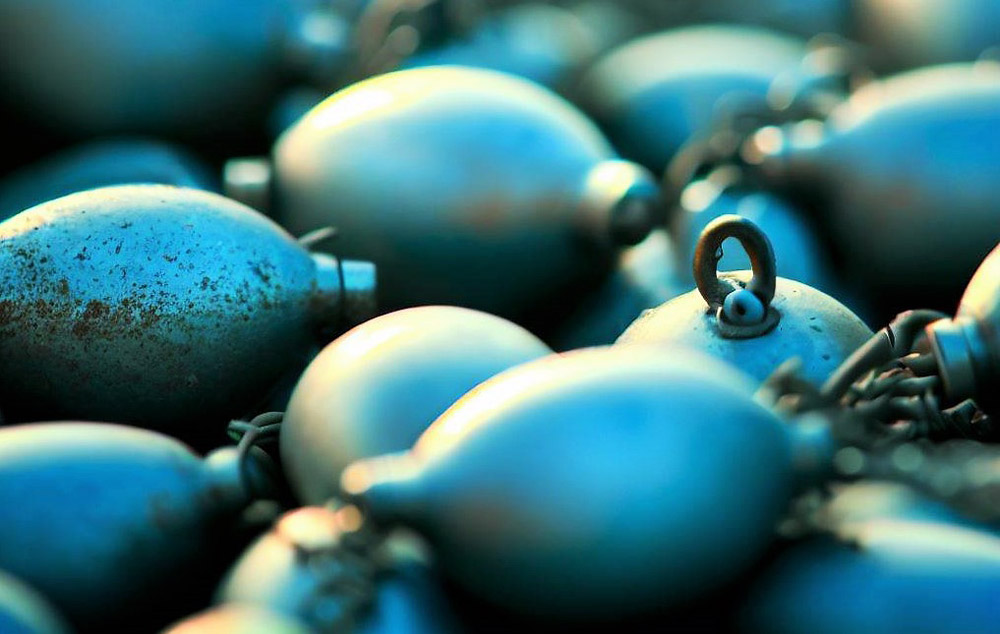
Conclusion
Recap: The Undeniable Importance of Sinkers in Fluke Fishing
Throughout this article, we have explored the pivotal role that sinkers play in fluke fishing. From influencing the behavior of the fishing line and the presentation of lures or bait to their impact on the overall success of your fluke fishing trip, sinkers are far more than a simple piece of fishing tackle. Different types of sinkers, be they bank, pyramid, or coin sinkers, offer unique advantages and potential challenges in the quest for fluke.
Experiment for Success: The Benefits of Diverse Sinker Choices in Fluke Fishing
As we’ve delved into the world of fluke fishing, it has become clear that the choice of sinker can make or break your fishing trip. It’s important to not only choose the right type of sinker but also the correct weight based on conditions such as water depth, current strength, and bottom composition. Therefore, I encourage all anglers, whether beginners or seasoned veterans, to give due consideration to their choice of sinker. Don’t be afraid to experiment with different types of sinkers, and adjust your choice based on the conditions and your observations on the day.
Final Thoughts or Tips for Successful Fluke Fishing
In conclusion, successful fluke fishing is a blend of knowledge, strategy, and adaptability. Understanding the behavior and preferences of fluke, choosing the right gear, and using it effectively, are all critical for success. When it comes to sinkers, remember that the goal is to present your bait or lure in the most natural and enticing way to the fluke. Don’t be bound by conventions or previous practices, and don’t be afraid to change your approach if something isn’t working. Remember, even the most experienced anglers continue to learn and adapt. That’s the beauty of fishing.
Dive Deeper: Further Reading and Resources for Sinkers and Fluke Fishing Enthusiasts

For those looking to delve deeper into the world of fluke fishing and the use of sinkers, there are a wealth of resources available. Here are some that you may find helpful:
Books
🙆”Fishing for Dummies” by Peter Kaminsky and Greg Schwipps – A comprehensive guide for beginners, covering all aspects of fishing including gear, techniques, and species-specific tips.
🙆”The Complete Guide to Saltwater Fishing” by Al Ristori – This book provides a deep dive into various aspects of saltwater fishing, including fluke fishing.
Online Resources
👾Fluke Fishing Tips and Techniques – This website offers a wealth of information on fluke fishing, including gear recommendations, techniques, and location tips.
👾Fishing Sinkers Guide – This website provides detailed information on various types of sinkers and how to use them effectively.
Forums and Social Media
➤The Hull Truth – An online forum where you can ask questions and get advice from experienced anglers.
➤BassResource – Although focused on bass fishing, this forum has a wealth of general fishing knowledge and a very active community.
➤Fluke Fishing Facebook Group – This social media group is a place to connect with other fluke fishing enthusiasts, share stories, and get tips.
YouTube Channels
➽John Skinner Fishing – John Skinner, a seasoned fluke fisherman, shares his tips and experiences on this channel.
➽Fisherman’s Headquarters – This channel offers a variety of fishing tips, including gear reviews and fishing techniques.
Please note that while these resources can provide valuable information, nothing replaces the experience of getting out on the water and learning first-hand. So, use these resources as a guide, but don’t forget to trust your observations and instincts when you’re out there fishing.

I live in Tenerife (Canary Islands) for the last 10+ years and share my daily fishing experiences on my website. Many years of personal experience as a fisherman and the vast experience of my friends allow me to write professionally on any fishing topics (from choosing a flashlight and equipment to deep-sea fishing).
All of my advice is based on practical real-world experience and will be useful to both novice anglers and professionals. Read more about the author.
Affiliate Disclosure: FishReeler.org sometimes gets paid for listings, through sponsors or affiliate programs like Amazon, Ebay, Cabelas, Bass Pro Shop, Shimano, Daiwa, Rapala, Renn, Okuma, KastKing, etс. Clicking a link helps keep FishReeler.org free, at no extra cost to you!
About the author: Each article is verified by the fishing expert Sergio Smirnoff. The articles are written by professional and amateur fishermen with 20+ years of fishing experience.
Note: The views and opinions expressed in this article are those of the authors and do not necessarily reflect the official policy or position of any agency. The articles are for informational purposes only, share your opinions in the comments and join the fishing discussions, let's share our fishing experiences together!


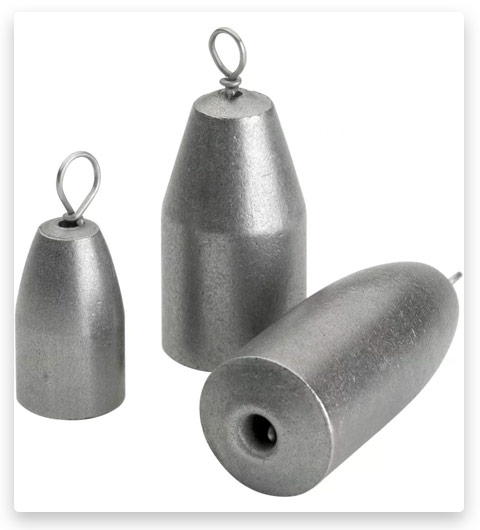
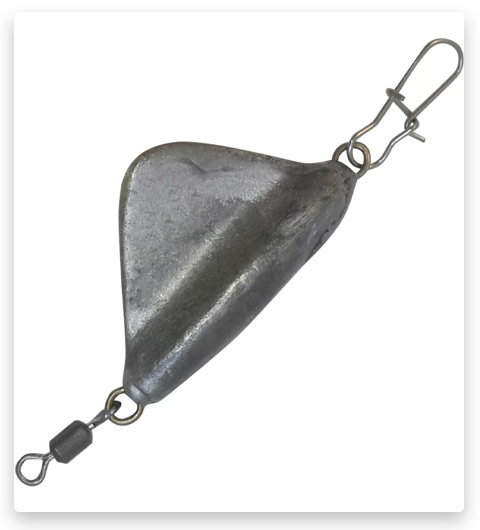
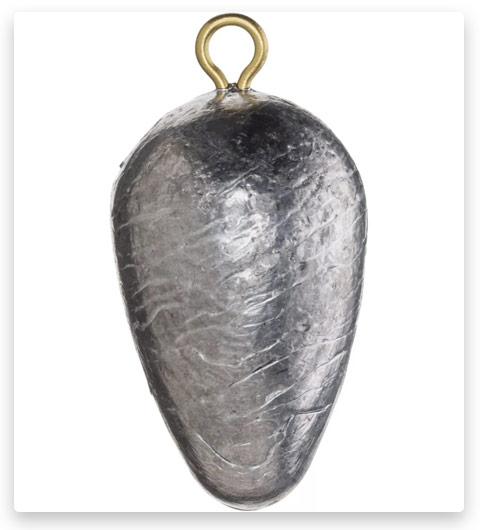

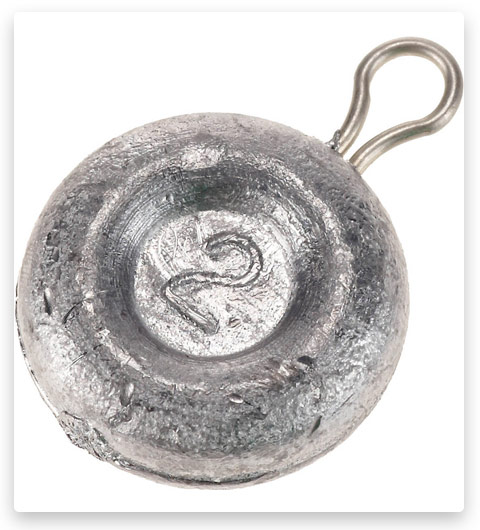
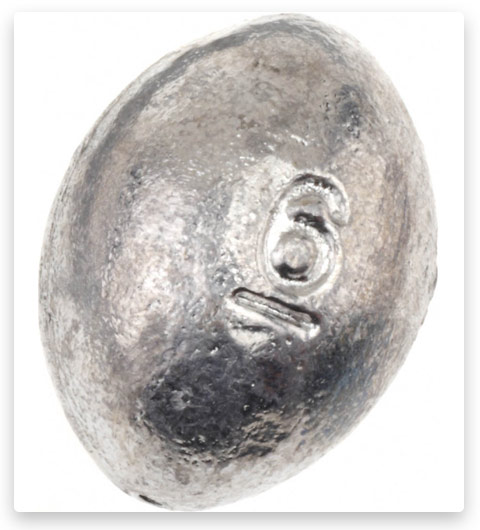
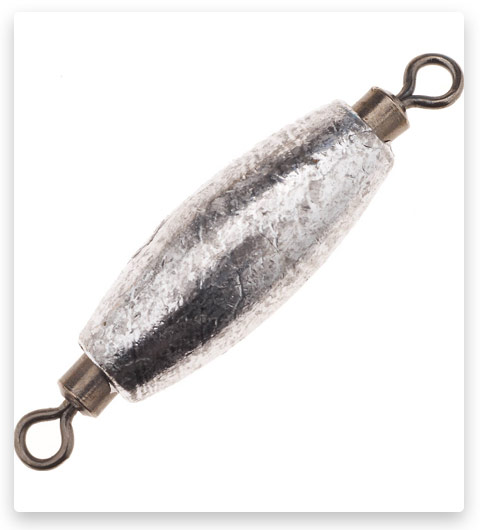
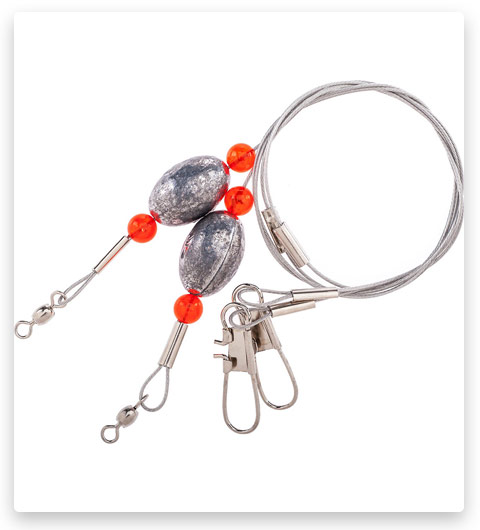
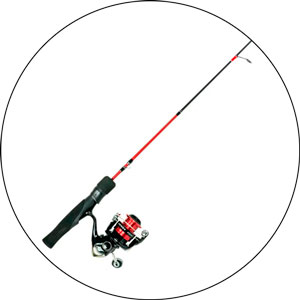

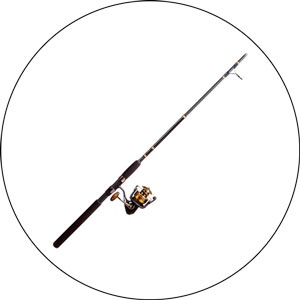
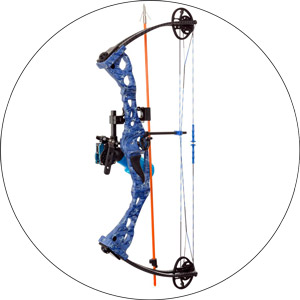

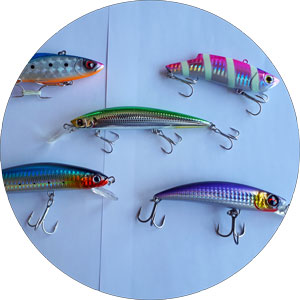
I’m excited to read more about the different types of sinkers and their uses in fluke fishing. As a beginner angler, I’ve been experimenting with different gear, and this article makes it clear that I should be paying more attention to my choice of sinker.
I’ve been a fluke fishing enthusiast for a long time, and I’ve seen firsthand how versatile these fish can be when it comes to what they’ll bite. I’ve had experiences where store-bought rigs did the trick, with both my own kids and others reeling in great catches. I’ve also had success adding my own twist to store-bought rigs with a teaser.
Bucktails have been another game-changer in my arsenal. I remember times when switching to a Bucktail turned the day around. I’ve got a collection of rigs, some of which were inspired by THT Member Bennie’s saltwater flies – they work wonders!
One rig that I’ve found to be really effective uses a 3 oz rattle sinker from the World Record Striper Company, paired with a 1/2 oz white/green Bucktail and an ALL Pro chartreuse grub tail. It’s a simple and straightforward setup, making it easy for anyone to fish and it’s consistently proven its usefulness.
During the winter, I keep myself busy by buying small bucktails, freshwater pieces, and other items to tie my own rigs. Then, when the season rolls around, I start experimenting. Just this morning, I was using a tiny black and white bucktail with a white grub. No bites initially, but after a quick change in strategy, I landed a nice 22-inch fish.
It goes to show that you need to keep trying different setups until you find what works best.
Interesting article! I’ve found another practical way to adjust the weight of my setup. I often use a bit of lead tape (commonly used in fly fishing with nymphs) or some soldering wire wrapped around the belly of the hook. It’s a cost-effective solution and gives me the flexibility to fine-tune the weight according to my specific needs.
As for hooks, I’m a fan of the Gammie G-Lock in sizes 3/0 or 4/0. They’ve consistently performed well for me in my fluke fishing endeavors. Just a couple of tips from one angler to another. Keep up the great fishing work, folks! 🙂
I wish more people understood the importance of using the right sinker for fluke fishing. I have seen many beginners using the wrong type or weight of sinker, which prevents them from getting their bait to the seabed effectively.
One setup I’ve found to be quite effective is the Sea Striker Fluke Killer. It’s a fantastic rig! By attaching the sinker above a swivel, you essentially have a Carolina rig tailored for fluke. All you need to do is add your preferred strip bait. I’ve had quite a bit of success using flounder belly. Just a friendly suggestion from a fellow fluke angler. Keep those lines tight!
As an avid fluke fisher, I appreciate the recognition of how important the right equipment is, especially the sinker. It’s true that the sinker can often be an overlooked aspect, but its role in getting the bait right to the seabed, where flukes are typically found, is absolutely crucial.
This article really hones in on the uniqueness of fluke fishing. Flukes’ habits of lying flat on the seabed and their excellent camouflage skills truly set them apart from other fish species. The right sinker can make all the difference in presenting the bait at the fluke’s level.
I completely agree with the point made about how the right sinker can significantly increase your chances of catching a fluke. I’ve personally experienced this during my summer fishing trips. A change in sinker type based on water conditions has often led to a successful fishing day.